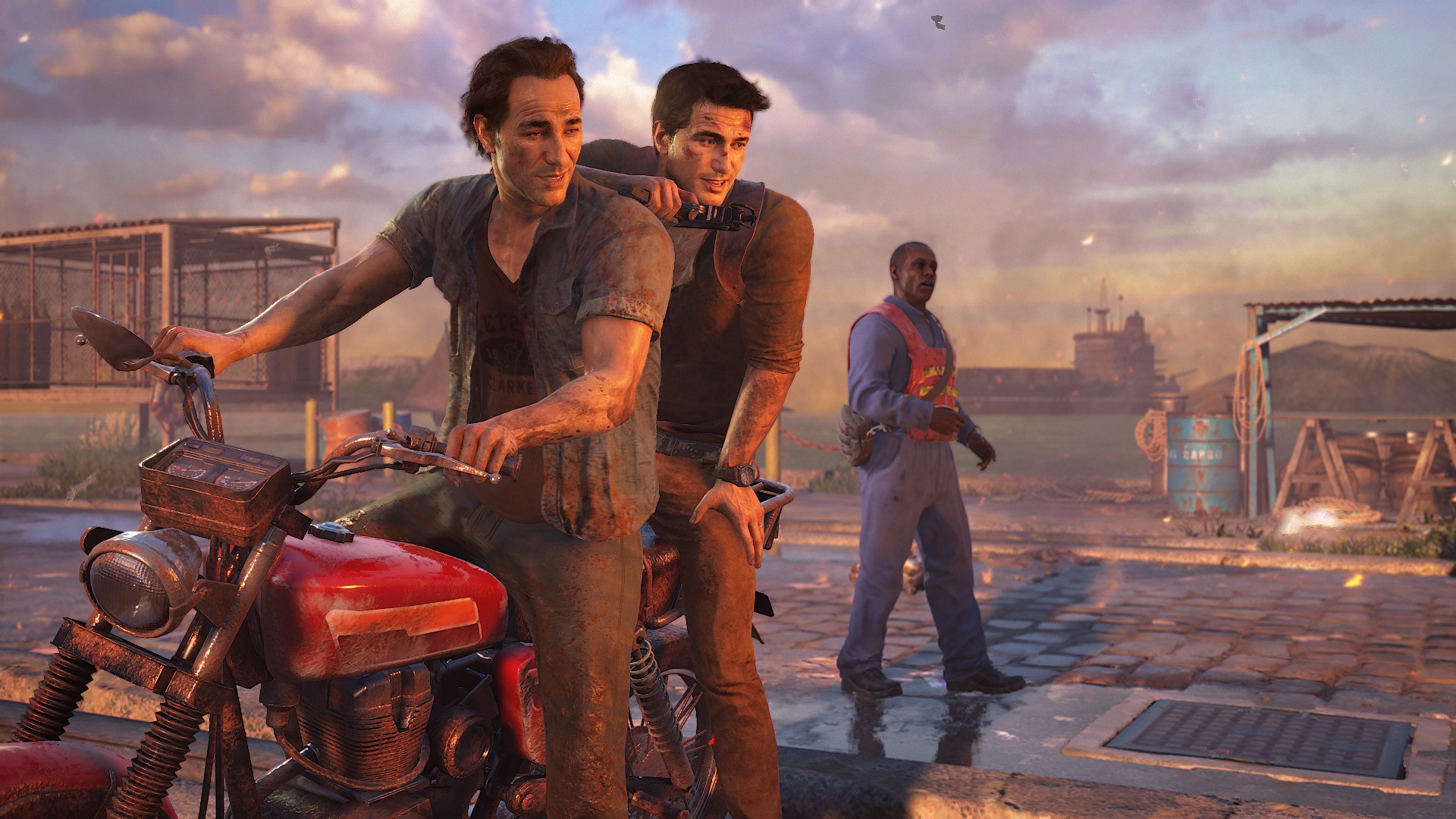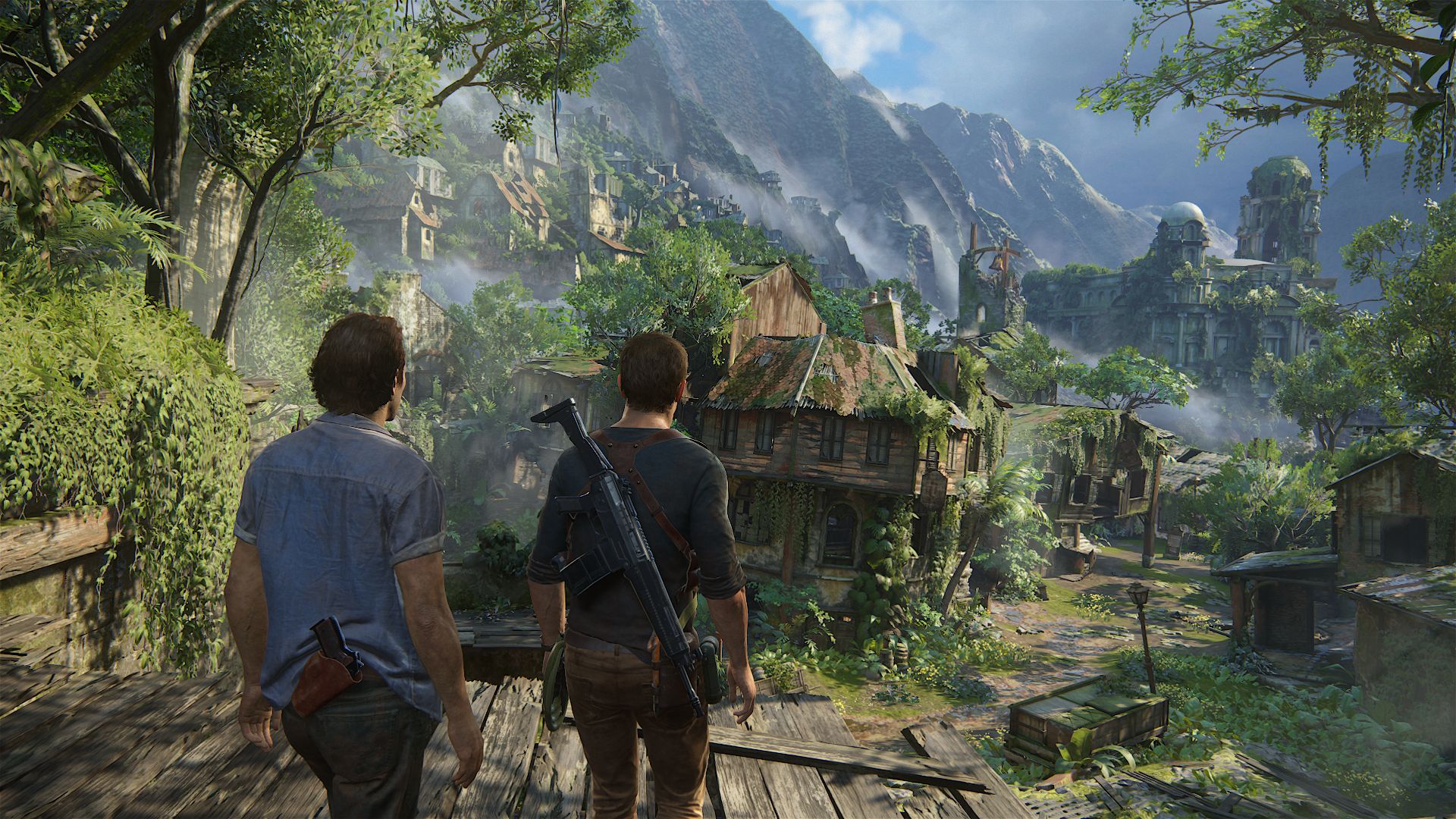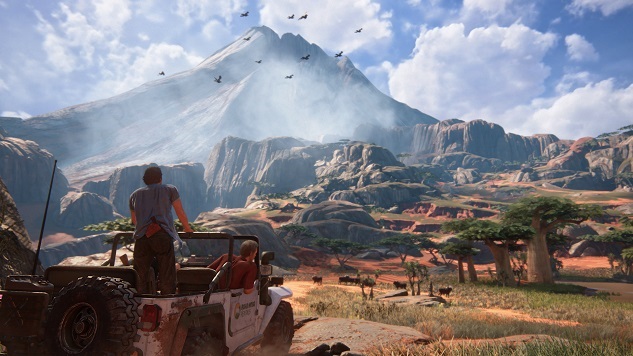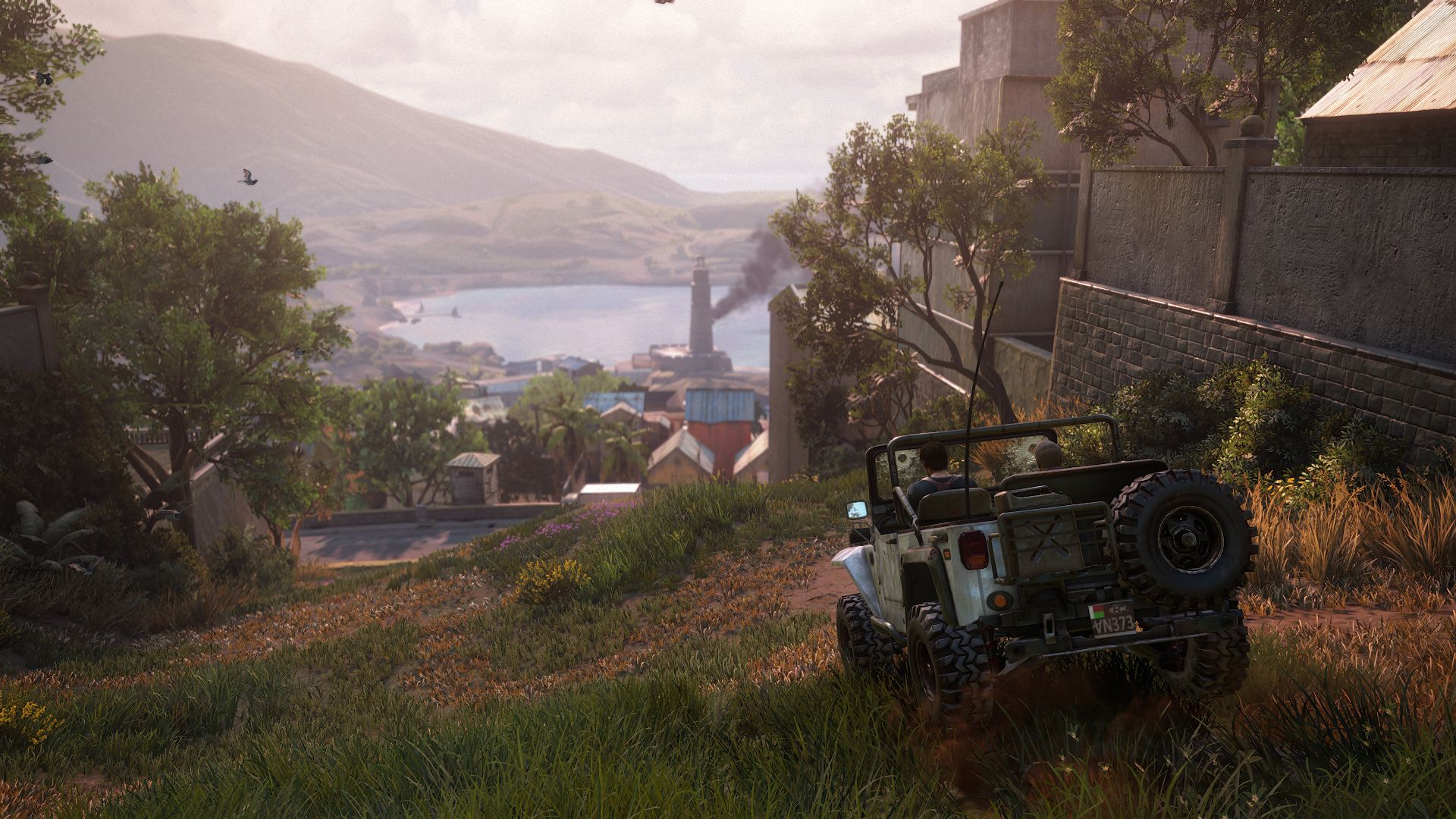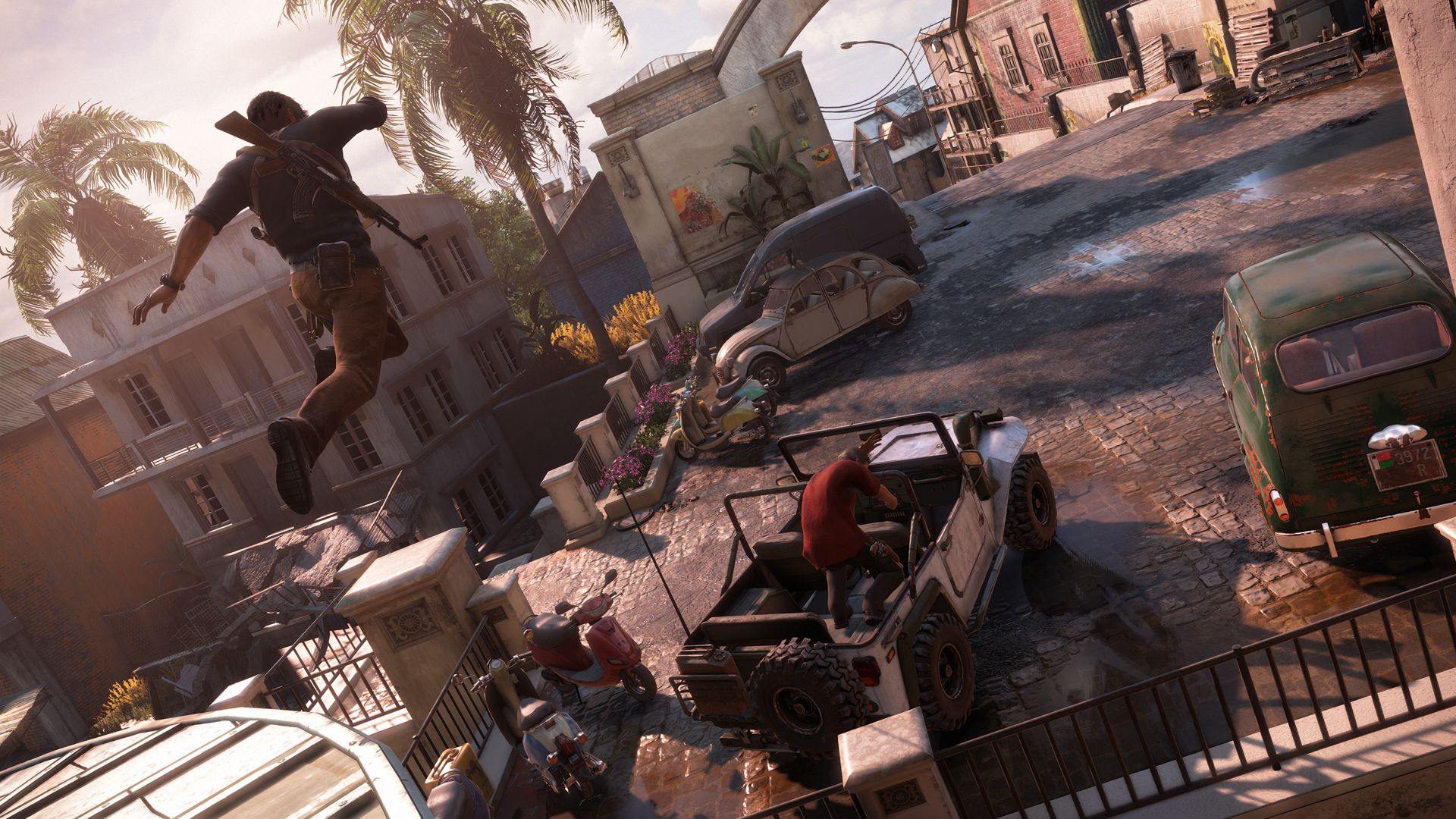Off the edge of the map.
*This is a reflection as much as it is a review. As such, certain elements of the Uncharted 4: A Thief’s End experience, most notably the multiplayer, has not been covered.
“Conquer thyself, till thou has done this, thou art but a slave; for it is almost as well to be subjected to another’s appetite as to thine own.” – Richard Francis Burton
Perhaps it’s fitting that the first video game review on ReelGood, ostensibly a cinema concentrated website, should be Uncharted 4: A Thief’s End. The final entry in the enormously popular Uncharted series is the latest game from developer Naughty Dog, a company known for designing games with a strong relationship to cinema. A Thief’s End is also the first Naughty Dog release since The Last Of Us in 2013. It’s no exaggeration to suggest that The Last Of Us is one of the most meaningful video games of all time, and probably the single most significant achievement in steering the video game medium toward mature and complex content.
The Last Of Us changed gaming in the way that shows like The Soprano and The West Wing changed television back towards the end of the twentieth century. The quality of writing was up to and even higher than the standards of first-rate cinema. There are also few to no time constraints in television. Shows develop characters and narrative threads over multiple episodes, or multiple seasons. Games also have that luxury of time but they put the control of the action in the hands of the audience, something that no other widespread art form is capable of. The possibilities for a medium like gaming, if it is accompanied by superior artistic integrity, are enormous.
I generally disregard the narrative in video games. I fast track through the dialogue and skip the cut scenes (in-game movies, for the uninitiated). The Last Of Us was the first game in which the characters and plot stuck with me just as much as some of the best films I’ve ever seen. And I’d controlled it. I was a silent partner to the story of Joel and Ellie, but my influence was the most critical. If you could show one game to skeptics to validate video games as a genuine narrative art form, The Last Of Us would almost certainly be it.
It’s important to emphasise the significance of The Last Of Us when talking about Uncharted 4: A Thief’s End. We’re living in a post-The Last Of Us world and, perhaps more importantly, Naughty Dog is creating games in a post-The Last Of Us world. Perhaps it’s unfair to compare Uncharted 4 to The Last Of Us, but it’s a natural comparison to make and Naughty Dog invite the comparison by imbuing Uncharted 4 with qualities that gamers might associate with The Last Of Us. Amy Hennig, the director of the first three Uncharted games, left production of A Thief’s End after two years of work and was replaced by Neil Druckmann and Bruce Straley, the directors of The Last Of Us. The in-game mechanics in Uncharted 4 also borrow heavily from The Last Of Us. Perhaps most notably however, is the tone of Uncharted 4‘s narrative. This is Uncharted 4 in a post-The Last Of Us world. It’s still light and it’s still fun, but there’s more going on than colours and lights.
The other shadow looming over A Thief’s End is Uncharted 2: Among Thieves. Looking back at the original Uncharted game (subtitled Drake’s Fortune), it’s remarkable to observe just how far the series has come. Drake’s Fortune was a wonderful looking game that flaunted the technical capabilities of the Playstation 3, but it contained few of the traits that would make up the best of Uncharted. Among Thieves, still arguably the best game in the series not considering technical capabilities, took the foundation established by Drake’s Fortune and built upon it to create one of the most significant video games of all time. Comparing Uncharted 2 and Uncharted 4 is sort of like comparing a film from the 1940s to a comparable film produced in 2016. The analogy is a bit weak, but it’s the best I’ve got. There will be obvious improvements in the contemporary film, such is the advantage of seventy years of improved insight, technique and technology. You don’t watch a film from the 1940s the same way you do a film from today. The comparison requires a certain suspension of the way in which we absorb modern cinema. And a lot of Uncharted 4 wouldn’t have been possible without Uncharted 2. Is Uncharted 4 better in 2016 than Uncharted 2 was in 2009?
Narrative has never been the strength of the Uncharted series, and A Thief’s End continues that tradition. It’s all about how Naughty Dog govern their narratives. The plots may be simple, but the best of Uncharted is simplicity handled impeccably. All of the entries in the series concern comparable journeys towards a lost city (El Dorado, Shambhala, Iram of the Pillars and Libertalia, respectively), trailed by underdeveloped villains with access to hordes of mercenaries. The plot has never driven the series forwards, it’s the character beats and the set pieces that have established Uncharted as one of the premiere game franchises. The individual plots are driven by what George Lucas might call a ‘MacGuffin’ (although I’m not sure that Hitchcock would). The search for Libertalia in A Thief’s End is somewhat different from the narratives in previous Uncharted games in that it feeds directly into the themes of the game. The journey of protagonist Nathan Drake corresponds with the historical tale of the treasure that they’re seeking. It also corresponds with the message behind the game, which in turn examines exactly what it is to be a treasure hunter; what it means to be an Uncharted game. If Uncharted 2 was the tale of a globe-trotting adventurer, on top of the world then Uncharted 4 is about a man with that same world on his shoulders. But it’s the same man, and adventure had lost none of its appeal, even if it isn’t conducted solely for the sake of thrill seeking anymore.
Here’s a nifty bit of insight from a piece on Uncharted from a rival website:
“I recently reviewed Dark Souls 3 here on VG247, and in a strange way I feel that it and Uncharted 4 are similar. Both are games from a series that have a clearly defining moment – in both instances the second game (by which I mean the original Dark Souls) and from developers who took a similar-but-different detour in the form of Bloodborne and The Last of Us before returning to that franchise. The result in both instances is an incredibly polished game that takes cues from both that defining series entry and the detour game. And in both instances I’d describe it as on paper the best entry in the series, though just as with Dark Souls 1 vs 3, Uncharted fans are likely to end up debating this endlessly.”
Moment to moment, Uncharted is remarkable. The set pieces might not be quite as memorable as in past – the cliff-hanging train in Uncharted 2 and the plane crash in Uncharted 3 stand out – but they are flawlessly executed. And that line of thought follows all the way through Uncharted 4. This is Uncharted fine tuned. The problems with A Thief’s End are less to do with what Naughty Dog has done wrong and more to do with what they could have done right. Unfortunately for Naughty Dog, success is their biggest enemy and they’ve astonished gamers so often that innovation is expected. Uncharted 4 isn’t innovative, but it makes perfect what has come before.
Curiously, the opening and the conclusion – generally strong points in Uncharted games – are two of the weakest elements of A Thief’s End. The opening, which plays like a cheap mini game from a lesser franchise, was reportedly lifted from the middle of the game and put at the start to give the initial moments with A Thief’s End a greater sense of excitement. The gambit fails and the initial impression of the game is worrying. Similarly, the final confrontation feels rushed, both mechanically and emotionally, at a point in which the game should reach its climax. Faulting much between these two points, in terms of game mechanics, level design and atmosphere would be erroneously critical. To fault the narrative and set pieces between those two points would be to nitpick.
Tweaks and slight additions make Uncharted 4 fantastic. The shooting mechanics and the climbing mechanics have been improved noticeably. Stealth is a marked and welcome addition to gameplay. The function of stealth in Uncharted 4 may not be as accomplished as comparable systems in stealth-focused games such as Assassin’s Creed, but it’s a satisfying option nonetheless and the option to approach combat without heavy use of firearms feels more in line with the character of Nathan Drake. Mass murder was always an ill fit for the otherwise cheerful protagonist.
I cared about the characters in Uncharted 4: A Thief’s End, but I didn’t care about them so much that it took me aback, as The Last Of Us did. Naughty Dog is still miles ahead in the arena of character development and execution in gaming, but whereas the characters The Last Of Us were are well-rounded as some of the best characters in movies, the characters in Uncharted aren’t. That’s not to say that the characters in Uncharted are bad, or one-dimensional. They’re not – individual moments stand out, particularly between Nathan and his wife Elena or Nathan and his brother Sam – they’re just not groundbreaking. Again, Naughty Dog’s success is it’s greatest adversary and if it weren’t for The Last Of Us, the character work in Uncharted 4 would have been more conspicuous in its merits.
The dialogue in A Thief’s End is perhaps the best in the series. It’s certainly executed the best, with most of the dialogue and character development occurring outside of cutscenes. For most of the game, Nathan Drake is accompanied by one or more partner, and the banter/dialogue between them that occurs during gameplay almost always feels natural and can propel the characters and story forward while allowing unbroken gameplay. There are nonetheless a lot of cutscenes in A Thief’s End, but they are generally welcome. One of the reasons for that is the astonishing graphics; the cutscenes allow for appreciation of just how remarkable the game is to look at without the distraction of gameplay, as peculiar as that may sound. Another is the writing. Regardless of how it compares to the writing in The Last Of Us, the writing in Uncharted 4 is still superior to most games out there.
You may control Nathan Drake but, in a way, Naughty Dog is controlling you. There are moments in which the dialogue and character interaction affect your own emotions, even though it’s actually Drake being affected – the sense of indignation at being abandoned as a boy by Sam, after he’d been so encouraging during the escape from the orphanage; the feeling of shame at having lied to Elena, the one part of life Drake loves more than adventuring; that desire for adventure that Drake can’t suppress, no matter how much he tries. This is Nathan Drake’s story, but Naughty Dog manipulates you into becoming Nathan Drake to complete it.
Naughty Dog have said that they like to make “playable summer blockbusters.” Many video games have drawn inspiration from the empty, bombastic action of Michael Bay, but the Uncharted series, with its focus on character and wit, feels like something that Steven Spielberg might have made at the height of his creative abilities. Uncharted 4: A Thief’s End is the best game in the series. It should be, considering it’s the only one to be release on current generation consoles and its release comes seven years after the groundbreaking release of Uncharted 2: Among Thieves. It’s a wonderful game. It’s one of the best games available in the current generation of consoles. It’s also one of the most compelling examples of the possibility of narrative art within the medium of video games.
93%
For more Reviews, click here. If you’re digging ReelGood, sign up to our mailing list for exclusive content, early reviews and chances to win big!
